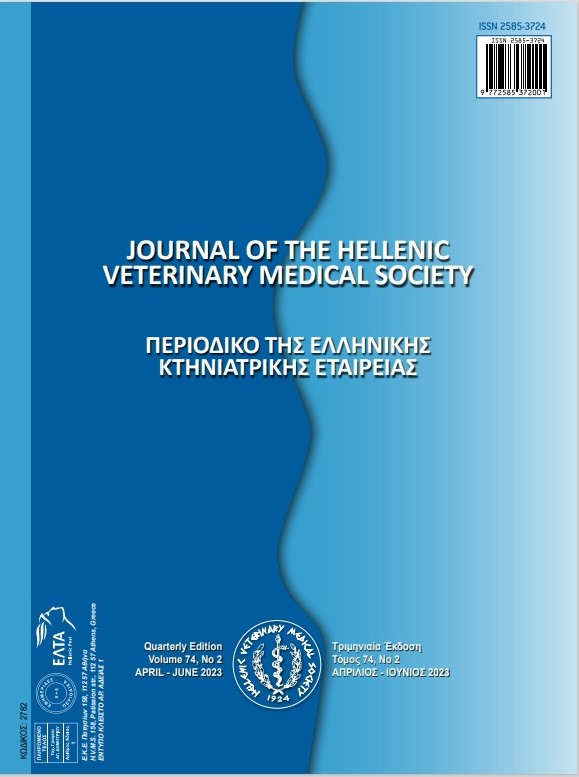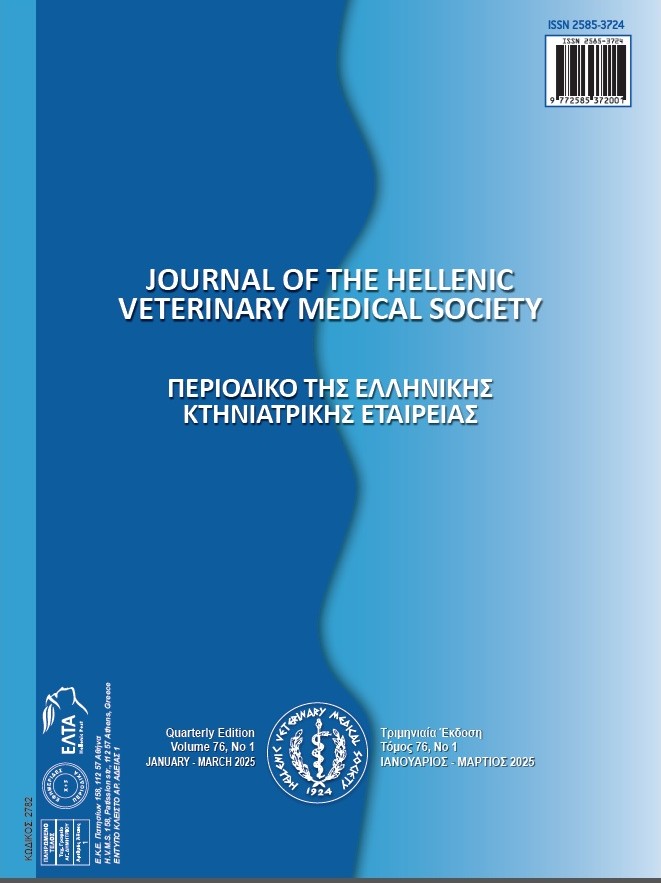Effects of garlic powder extract on selected fecal characteristics and health of neonatal Saanen goat kids
Abstract
Twenty-seven newborn kids were used to investigate the effects of garlic powder extract supplementation on selected fecal characteristics, body weight (BW), average daily weight gain (ADG), occurrence of diarrhea and hematological traits. Kids were assigned to one of the three groups (C: control group, G1: group supplemented with 50 mg/kg BW garlic product, G2: group supplemented with 100 mg/kg BW garlic product) at 3 days of age. Each group consisted of 9 kids. Each kid in G1 and G2 was supplemented with 50 or 100 mg/kg BW/day garlic powder extract from 3 days to 28 days of age, respectively, whereas the kids in C did not receive garlic product. There were no differences (P>0.05) in BW, ADG, fecal score and body temperature among the groups. There were no differences (P>0.05) in fecal pH at 3 and 21 days of age among the groups, whereas fecal pH was lower for G1 in comparison to C at 7 days of age and G2 had a higher fecal pH than C and G1 at 28 days of age (P=0.05). Fecal total coliform population results were not different (P>0.05) among the groups. The mean numbers of days with diarrhea were not statistically different among the groups (P>0.05) but were numerically decreased in G1 and G2 compared with C. No difference (P>0.05) in the incidence of diarrhea was found among the groups. The incidence of diarrhea was numerically higher for G2 in comparison to C while G1 had a lower incidence of diarrhea numerically than group C. There were no differences (P>0.05) in total white blood cell, lymphocytes, neutrophils, monocytes and eosinophils counts at 29 days of age. G1 had a lower basophils concentration (P=0.05) than C and G2. Based on the results of fecal pH, it can be reported that garlic product supplementation had no consistent effect on fecal pH. Because of both decreased mean number of days with diarrhea in G1 and a lower incidence of diarrhea in G1 compared with C, it may be stated that 50 mg/kg BW/day of garlic product helps to decrease the occurrence of diarrhea in newborn kids.
Article Details
- Zitationsvorschlag
-
Gök, A., & Kara, Ç. (2025). Effects of garlic powder extract on selected fecal characteristics and health of neonatal Saanen goat kids. Journal of the Hellenic Veterinary Medical Society, 76(2), 9281–9288. https://doi.org/10.12681/jhvms.39169
- Ausgabe
- Bd. 76 Nr. 2 (2025)
- Rubrik
- Research Articles

Dieses Werk steht unter der Lizenz Creative Commons Namensnennung - Nicht-kommerziell 4.0 International.
Authors who publish with this journal agree to the following terms:
· Authors retain copyright and grant the journal right of first publication with the work simultaneously licensed under a Creative Commons Attribution Non-Commercial License that allows others to share the work with an acknowledgement of the work's authorship and initial publication in this journal.
· Authors are able to enter into separate, additional contractual arrangements for the non-exclusive distribution of the journal's published version of the work (e.g. post it to an institutional repository or publish it in a book), with an acknowledgement of its initial publication in this journal.
· Authors are permitted and encouraged to post their work online (preferably in institutional repositories or on their website) prior to and during the submission process, as it can lead to productive exchanges, as well as earlier and greater citation of published work.





